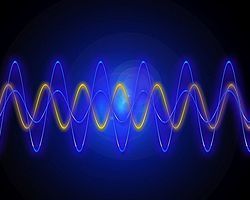Lesson 2 : Lab
- Objectives
- Step 1Presentation
- Step 2Your Challenge
- Step 3Slinky Sound Waves
- Step 4Rope Light Waves
- Step 5Using Waves to Transfer Information
- Step 6Recording signals
- Step 7Stored Signals
- Step 8Transmitting Signals
- Step 9Exit Ticket Questions

Investigate in a lab setting the comparison of energy transfer in light and sound waves to explain how the increase or decrease in energy affects the properties of the wave. Extend knowledge of light and sound waves by exploring how digital and analog signals can be created from waves. After comparing the use of these signals in devices, conclude how digital signals provide a more reliable way to encode and transmit information.
Standards
- MS-PS4-1
- Use mathematical representations to describe a simple model for waves that includes how the amplitude of a wave is related to the energy in a wave. [Clarification Statement: Emphasis is on describing waves with both qualitative and quantitative thinking.] [Assessment Boundary: Assessment does not include electromagnetic waves and is limited to standard repeating waves.]
- MS-PS4-2
- Develop and use a model to describe that waves are reflected, absorbed, or transmitted through various materials. [Clarification Statement: Emphasis is on both light and mechanical waves. Examples of models could include drawings, simulations, and written descriptions.] [Assessment Boundary: Assessment is limited to qualitative applications pertaining to light and mechanical waves.]
- MS-PS4-3
- Integrate qualitative scientific and technical information to support the claim that digitized signals are a more reliable way to encode and transmit information than analog signals. [Clarification Statement: Emphasis is on a basic understanding that waves can be used for communication purposes. Examples could include using fiber optic cable to transmit light pulses, radio wave pulses in wifi devices, and conversion of stored binary patterns to make sound or text on a computer screen.] [Assessment Boundary: Assessment does not include binary counting. Assessment does not include the specific mechanism of any given device.]
Mosa Mack Pro